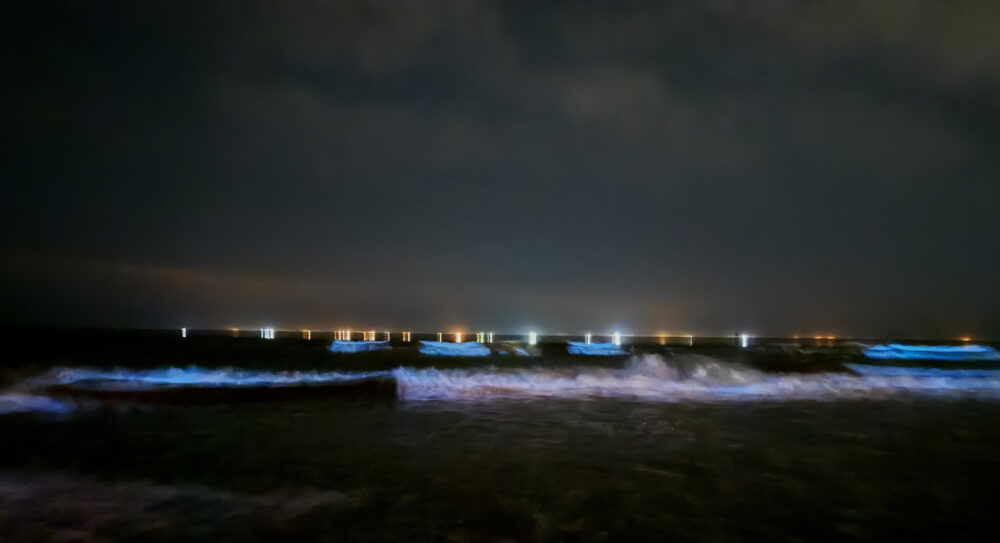
Headed to the coast soon? There still may be time to see bioluminescence in the ocean, bright blue lights emitted by ocean organisms undergoing chemical reactions.
The phenomenon occurs in Noctiluca scintillans, also called “sea sparkle,” which blooms yearly, according to Texas A&M University Galveston.
“During this time of year off the coast of Galveston and Bolivar, the temperature of the water is just right for the organism to grow in numbers,” Jamie Steichen, a professor in the university’s marine biology department said.
Noctiluca scintillans is found in coastal environments across subtropical, tropical and temperate regions. When conditions for growth improve, the phytoplankton can re-enter a growth phase of their life cycle and take the form of their adult phase. And when the water temperature, light and nutrients are just right, the phytoplankton can be reactivated, emitting blue sparkles across the ocean’s surface.
Maria Jarvis Mitchell, a Bolivar resident, said the phenomenon can usually be seen near Galveston around this time every year.
“You just never know when or for how long,” she said. “As of last night it was still there in limited places but definitely not as strong or bright or widespread as in the earlier days,” Mitchell said.
The best time to spot the bioluminescent bloom is after the sun has completely set, and areas with little light pollution. Noctiluca scintillans don’t produce toxins and are generally safe to be in the water with.
“Bioluminescence is very common in the ocean and in some terrestrial organisms,” Aja Schultze, a marine biology professor said in a press release from the university. “It evolved multiple times throughout evolutionary history. Bioluminescence occurs in certain bacteria, in unicellular plankton, in many animals and even in fungi.”
“Bioluminescence can have many different functions, such as predator deterrence, luring prey or luring a sexual partner,” Schultze said. “Sometimes we have no idea what the function is, and it’s possible that there isn’t always one. Theoretically, bioluminescence could be just a byproduct of some other physiological process.”
Residents on Crystal Beach have reported seeing the phenomenon most days this week, which is more prevalent with stronger wind conditions.
“Visitors from all over have jumped in their cars and driven hours to come see it, not even knowing when they got here if it would still be here or not,” Mitchell said.

 84 °F
84 °F